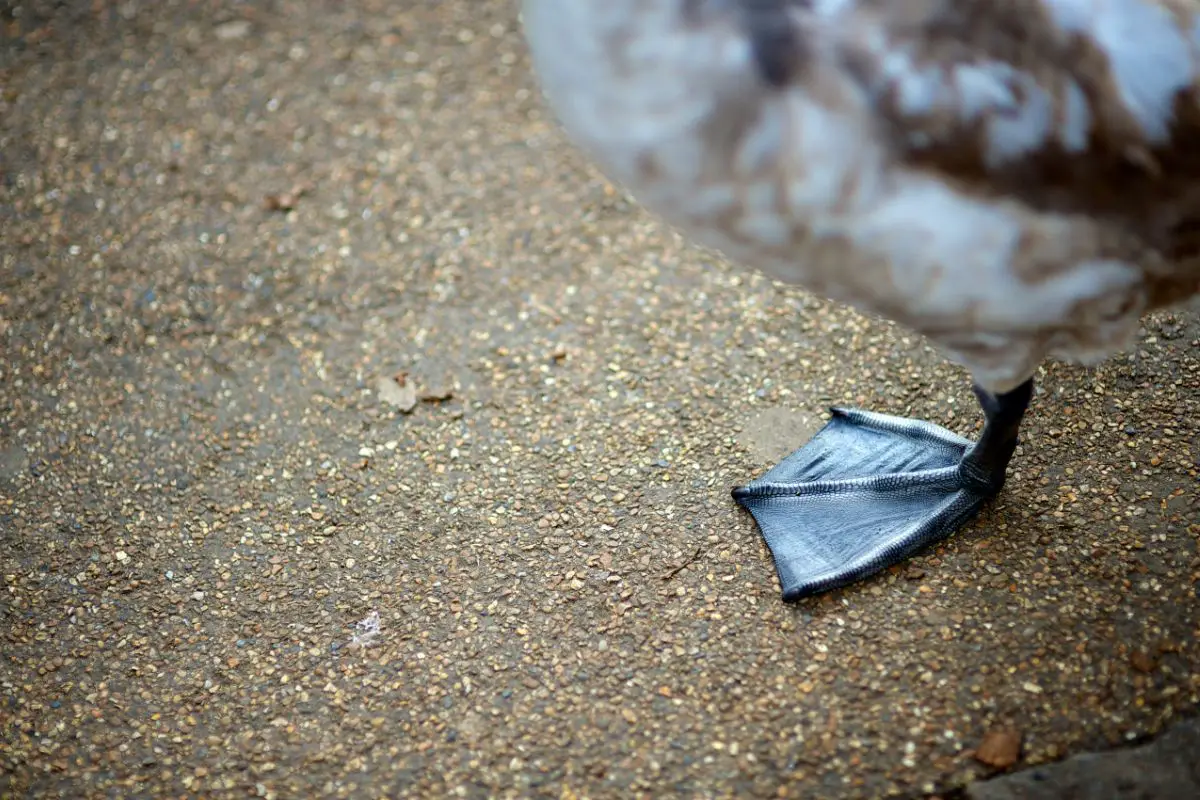
Penguins, geese, ducks, albatrosses, coots, avocets, and flamingos are a few examples of birds that have webbed feet. Did you know that there are over 400 bird species with webbed feet? Webbing between the toes is a feature of swimming among certain birds.
The webbed feet help the bird to be more effective in the water. Additionally, diving birds also use it to propel themselves through the water. I’ve always been impressed by gosling’s ability to swim as early as two weeks after birth.
But, until I learned about their webbed feet, I was always perplexed about how they could swim at such a young age. Let’s look at the different webbed feet and birds with web-feet features.
Webbed Foot Explained?
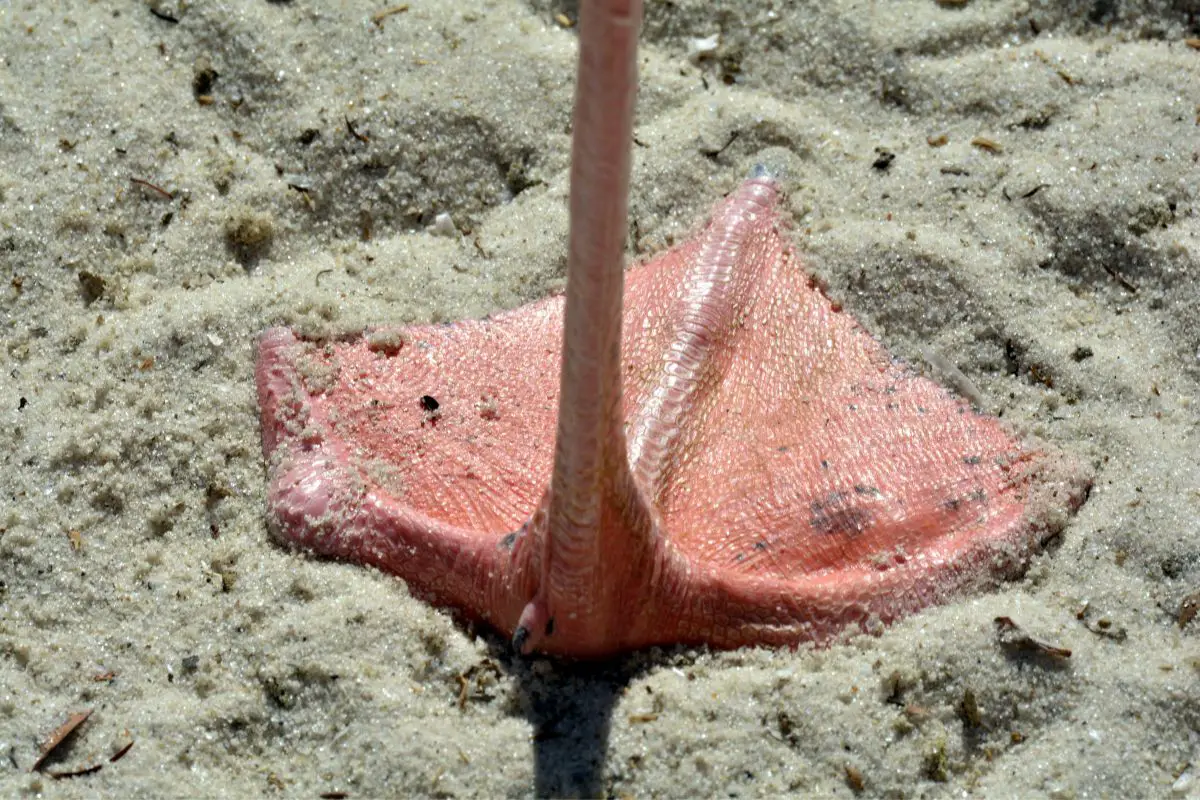
The webbed foot in birds is an anatomic structure comprising the skin that connects the digits of a bird. This structure allows the bird to swim and helps them walk in unstable surfaces such as muddy or swampy places. You can find this anatomical structure of webbed feet in many species of aquatic and semi-aquatic birds.
It’s primarily found in birds that depend on swimming for a significant part of their lives. Most birds that have webbed feet live near water. You may also find webbed feet in amphibians and mammals such as frogs and American beavers.
The Types of Webbed Feet
The fusion of all or some toes forms webbed feet in birds via thin sheets of skin. This can be classified based on the extent of webbing and the type of toes involved.
Here are the different categories of webbed feet in birds.
- Palmate: A large membrane connects the anterior toes at full length in palmate feet. The front toe, known as hallux, is entirely separate from the other three toes, forming a hind toe. Palmate feet are standard in birds like ducks, geese, gulls, and swans.
- Totipalmate Feet: A broad, thin membrane binds all four toes in these feet that are flat and resemble paddle-like structures. You can find the totipalmate feet in penguins, grebes, pelicans, and cormorants.
- Semipalmate Feet: Only three toes out of four are bound by a small web in these webbed feet, whereas the fourth toe remains free. Waterbirds such as ducks, geese, herons, grouse, sandpipers, plovers, and avocets have these webbed feet.
- Lobate Feet: Lobate feet are large, flat feet with webbing between the toe webs that are restricted to around the base of toes only. Grebes, finfoots, coots, and phalaropes have lobate feet.
Which Birds Have Webbed Feet?
There are many birds with webbed feet, and in this article, I’ll highlight just a few.
1. Ducks
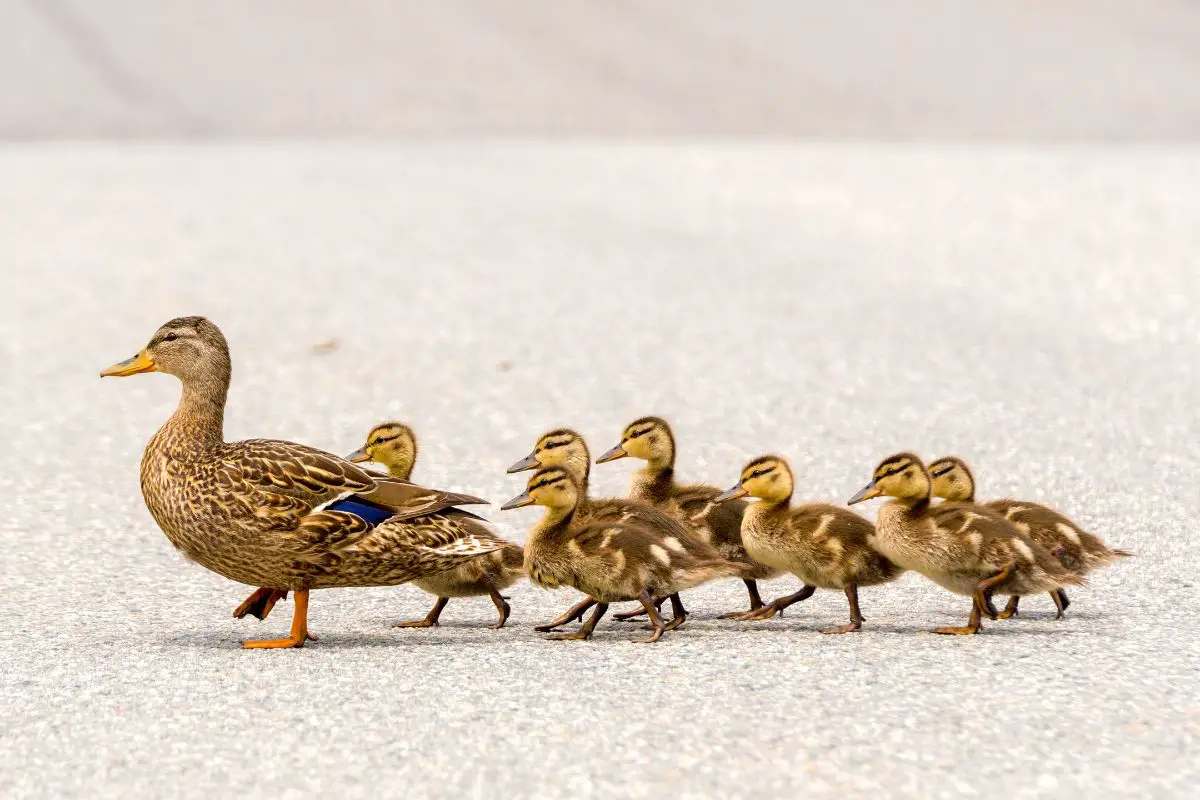
“The secret of success is to be like a duck, smooth and unruffled on top, But paddling furiously underneath.” Bill Cosby. Ducks are waterfowl that are part of the Anatidae family. They have a broad bill, short necks, and short legs.
Most ducks feed off of water plants, insects, small fish, worms, and mollusks. You can find ducks in both fresh and seawater. In a 2016 waterfowl survey, the estimated population for duck breeding was 48.4 million.
There are different duck types and species widely spread throughout the world. The largest duck globally is the Muscovy duck (Cairina moschata), which has a body length of up to 30 inches and weighs 15 pounds.
2. Penguins
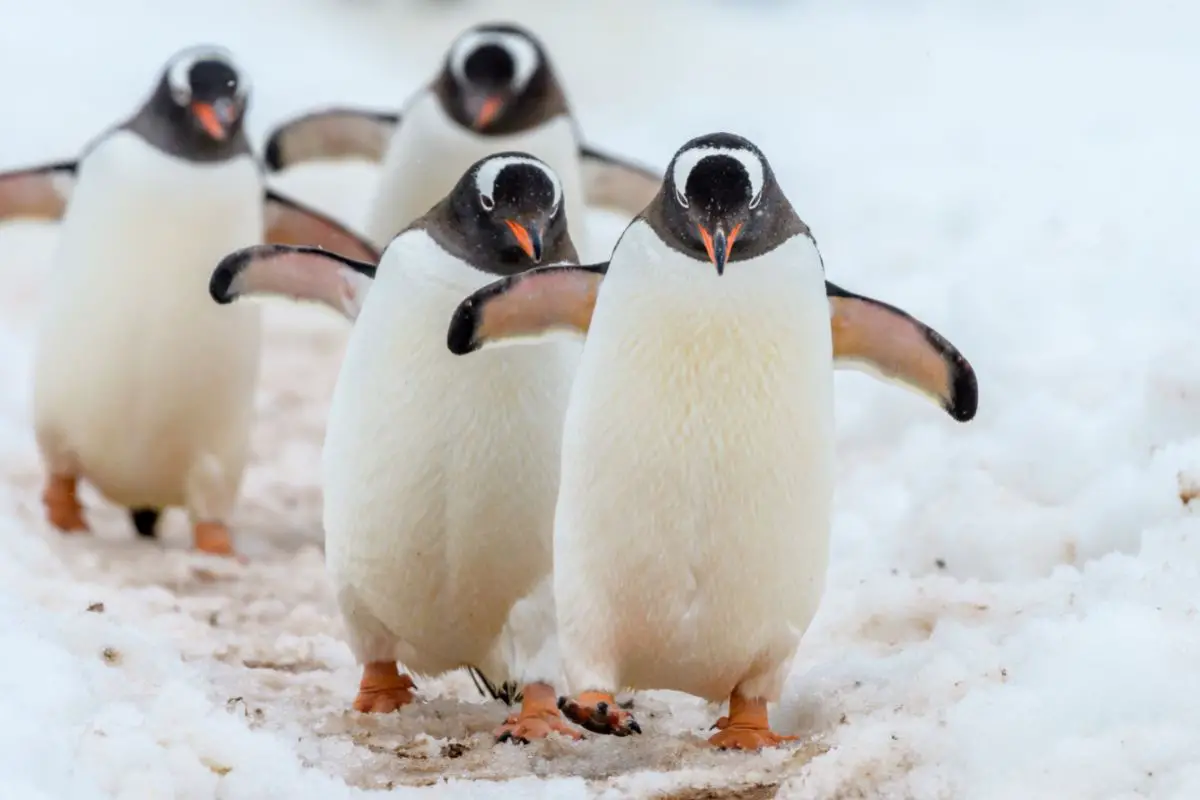
“One can’t be angry when one looks at a penguin.” John Ruskin. Penguins are flightless birds, and they mostly live in the southern hemisphere. There are 18 penguin species, and they have a streamlined body that helps them swim efficiently.
They are known for black and white coloring, and you can easily find them in zoos worldwide, where their antics delight visitors of all ages. Penguins are carnivores, and they feed primarily on fish, crabs, squid, crabs, krill, and other seafood available. These birds do not have teeth, but their tongues have spines.
Their weight ranges from 2 to 88 pounds.
3. Gulls
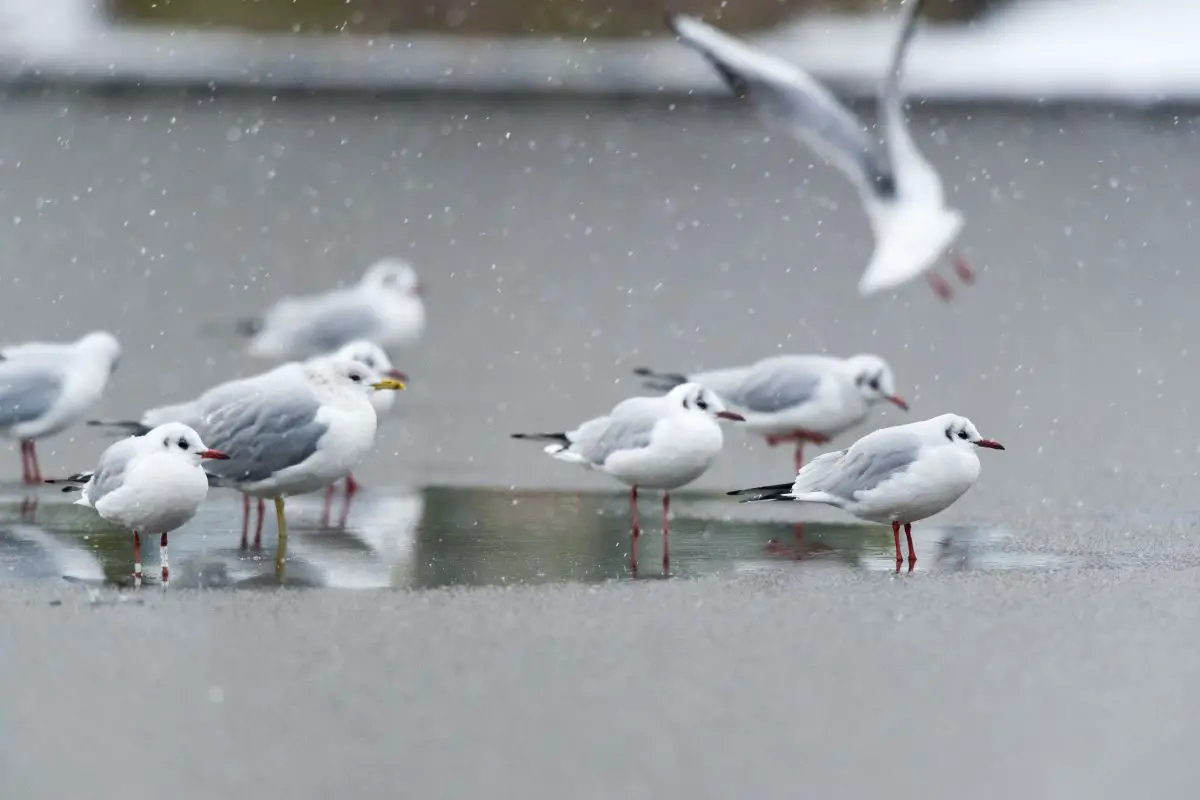
Gulls, also known as colloquially seagulls, refer to any seabird in the family Laridae. These birds are gray or white with black markings under their head or wings. They have a wide range of habitats and can be found in many parts worldwide.
These birds are often seen near the coast, on the shores of lakes, or on the banks of rivers. A gull’s diet is varied and consists of small fish, insects, worms, and other small creatures that live in the water. In addition, they can fly for long distances and are very fast fliers.
Some species even migrate over great distances each year. These birds are excellent at walking, flying, and swimming.
4. Albatrosses
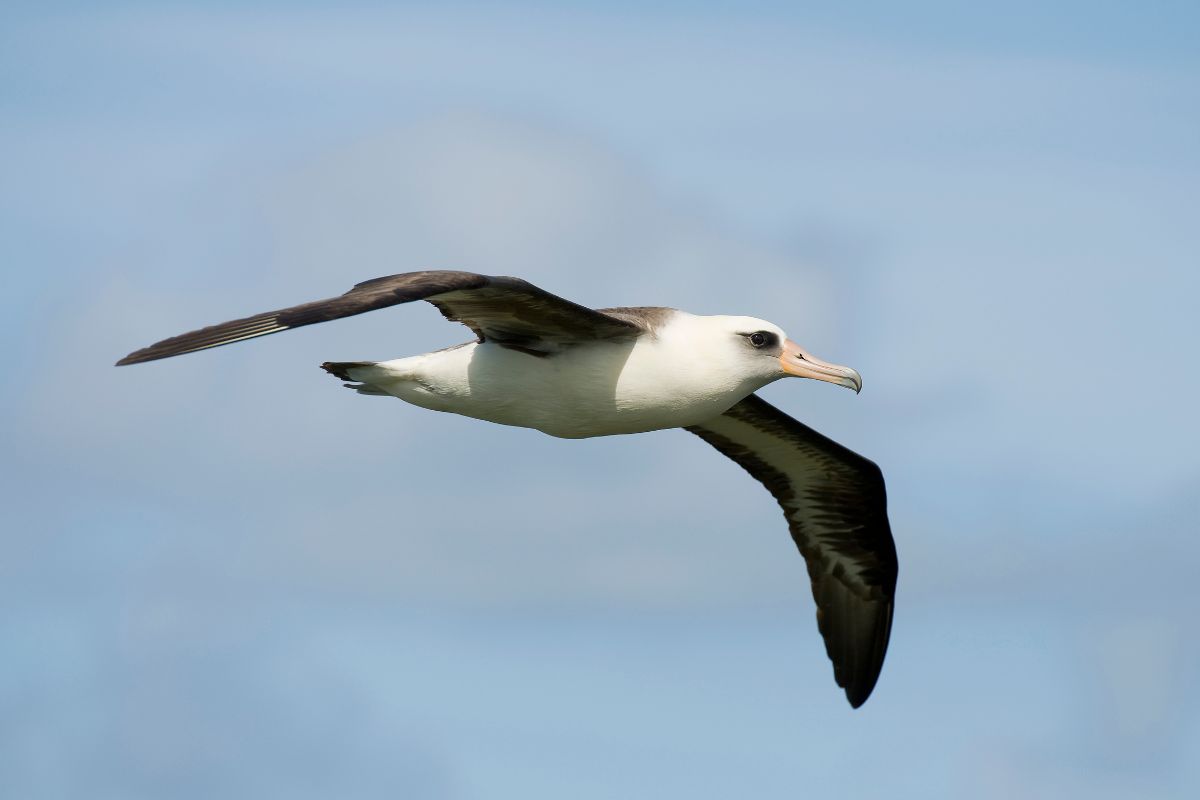
Albatrosses are brilliant birds that live in the sea. This is among the largest flying birds in the world. They also have long legs, making them excellent at walking on land.
Albatrosses fly long distances over open oceans, using air currents to glide for long periods without flapping their wings. They use a particular maneuver at takeoff to get airborne called “dynamic soaring.” This seabird has the largest wingspan of any bird and can cover great distances easily, flying hundreds of miles without touching the ground.
As a result, it’s not uncommon for an albatross to spend years at sea before returning to land.
5. Coots
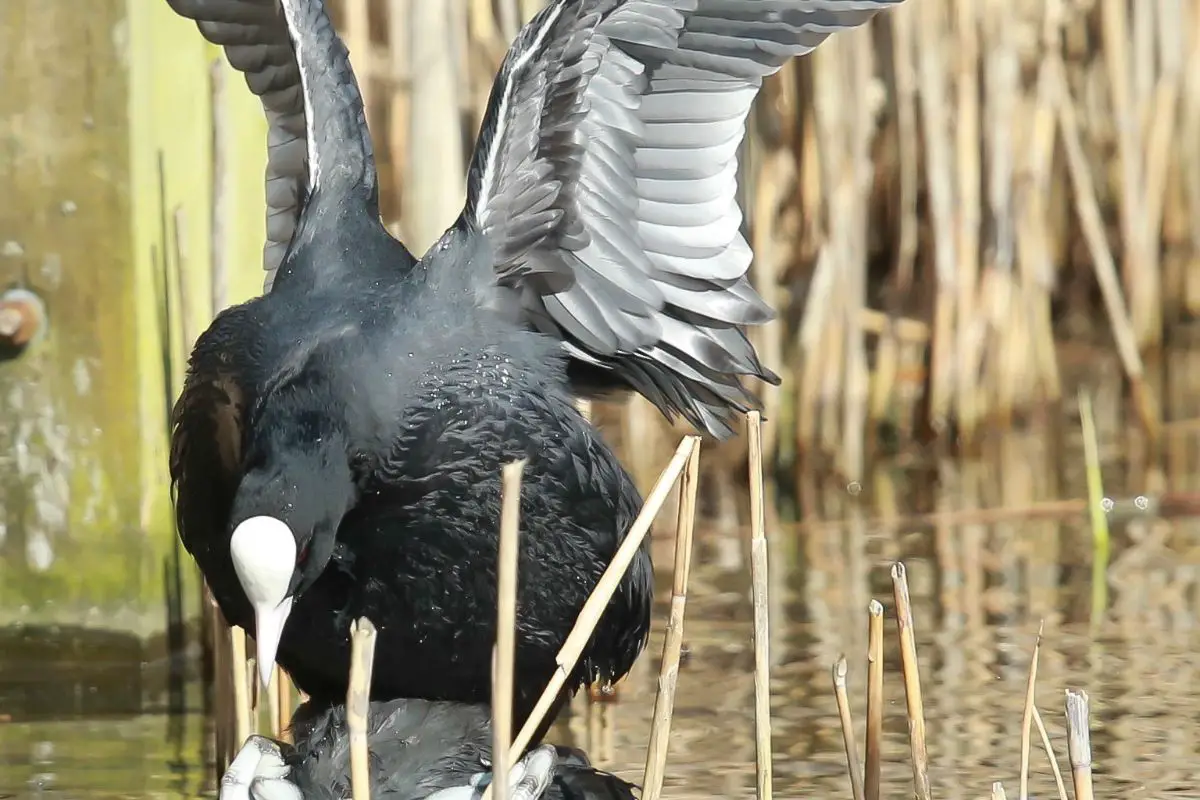
A coot is a bird that lives in the marshes. It comes from the Rail family, Rallidae. It has huge feet with webbed skins, which helps it swim easily in muddy and shallow water.
The feet also help in getting airborne. However, they are not very fast flyers and prefer swimming or walking on the ground. Coots are gray to black with a white bill.
These birds are omnivorous, eating both animal and plant life. They prefer to nest near water sources and live in colonies.
6. Avocets
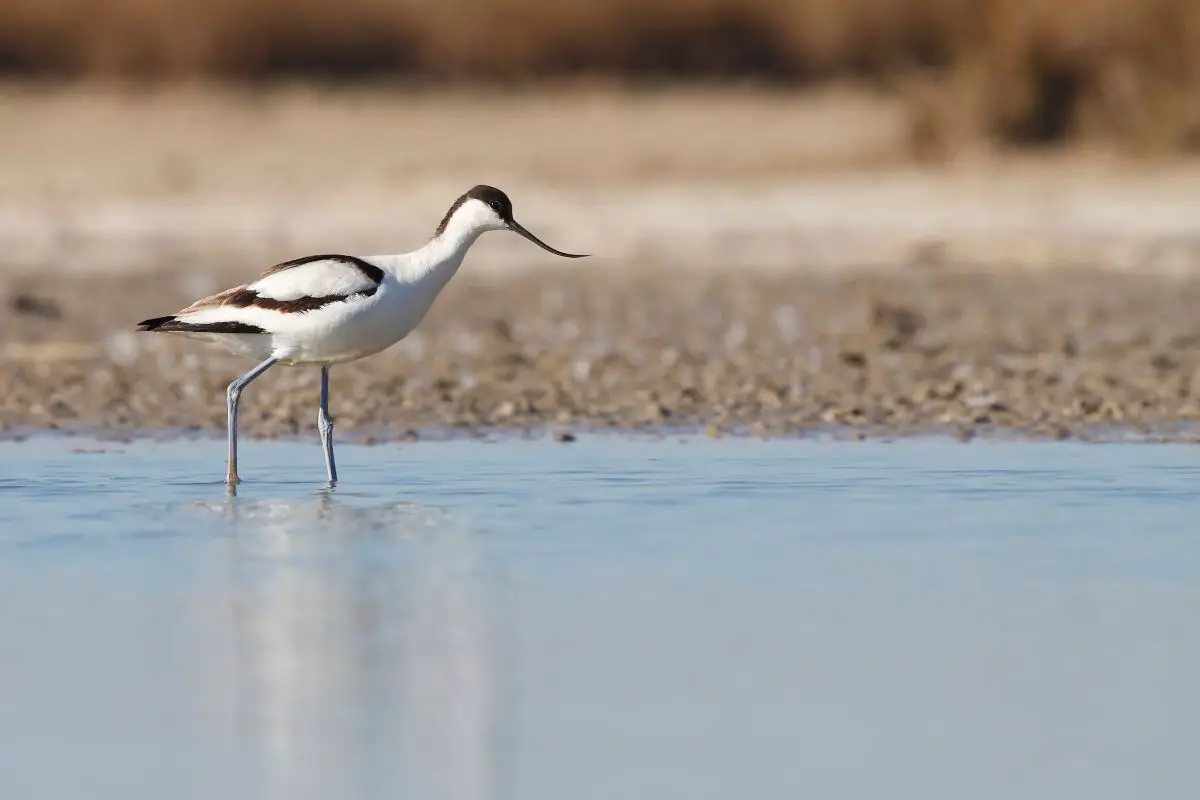
Avocets are a family of wading birds that live near the water. They have long legs, long necks, and long bills. Avocets use their long bills to filter food out of the water, and their webbed feet help them stand in shallow water while they do it.
There are four species of avocet: the American, the red-necked, Andean, and the pied avocet. These birds love to spend most of their time around water. Avocets are carnivores, and their diet includes shrimps, water fleas, beetles, brine flies, and amphipods. These birds love spending most of their time in shallow fresh and saltwater wetlands.
7. Flamingos
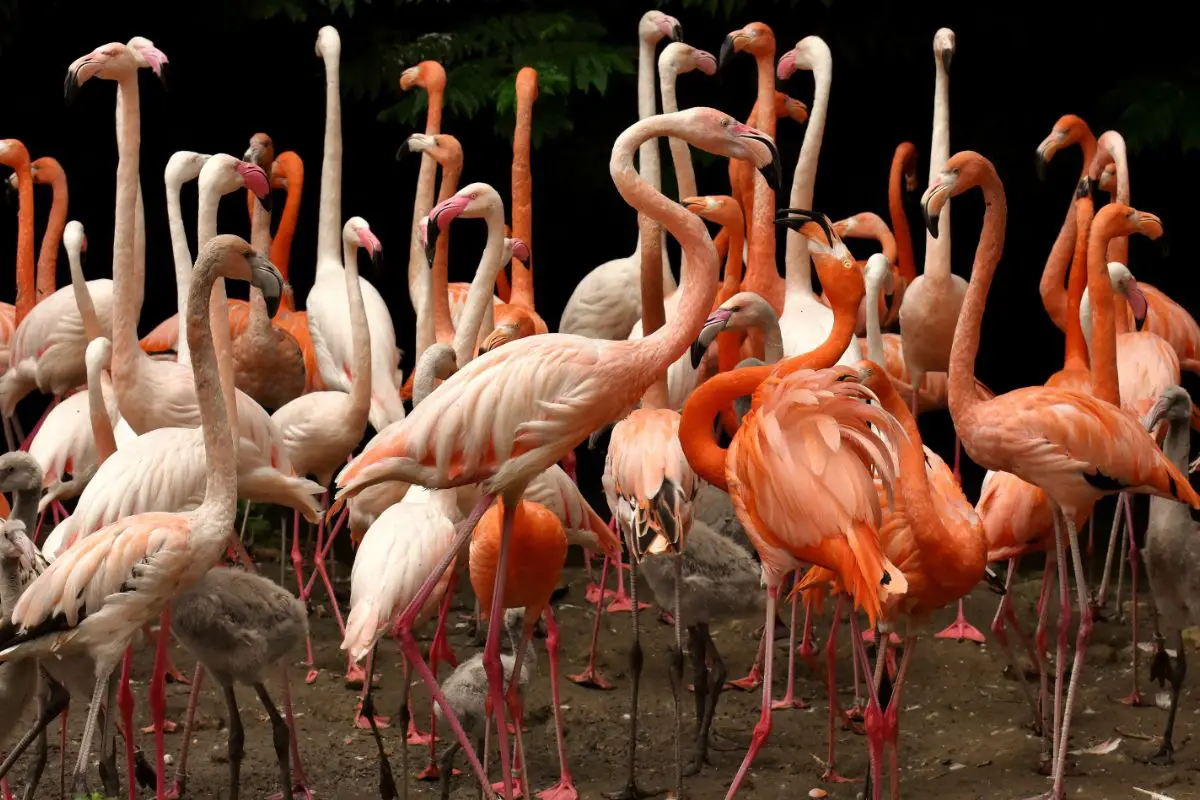
Flamingos are large birds with pink plumage and long legs and necks. They have beaks that curve down and love their heads facing down. However, when they walk on land, flamingos walk with their heads facing up unless they are looking for food.
Flamingos also have webbed feet, which help them move through water without sinking. The beautiful birds live in tropical climates worldwide but are most often found near the equator or in areas where it’s warm year-round. They prefer shallow lakes and lagoons because these areas provide enough food for them.
Flamingos are intelligent birds; they even have mating rituals to attract females.
Takeaway
Many birds have webbed feet. These include ducks, albatrosses, coots, avocets, and flamingos. Most of these birds live in water or near water.
Birds use the webbed feet for swimming and gaining stability on uneven ground, such as muddy surfaces.
